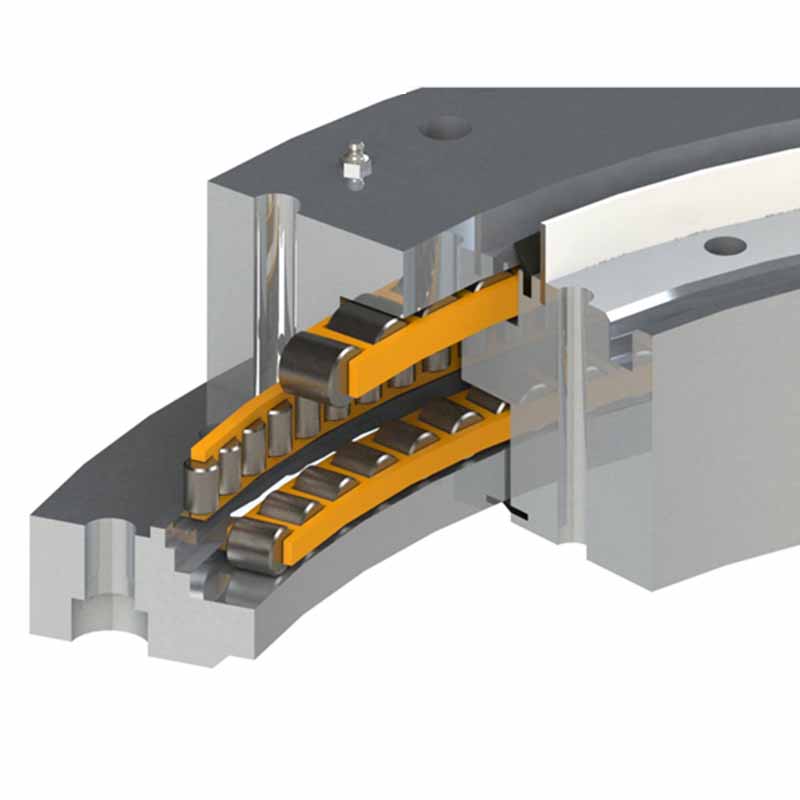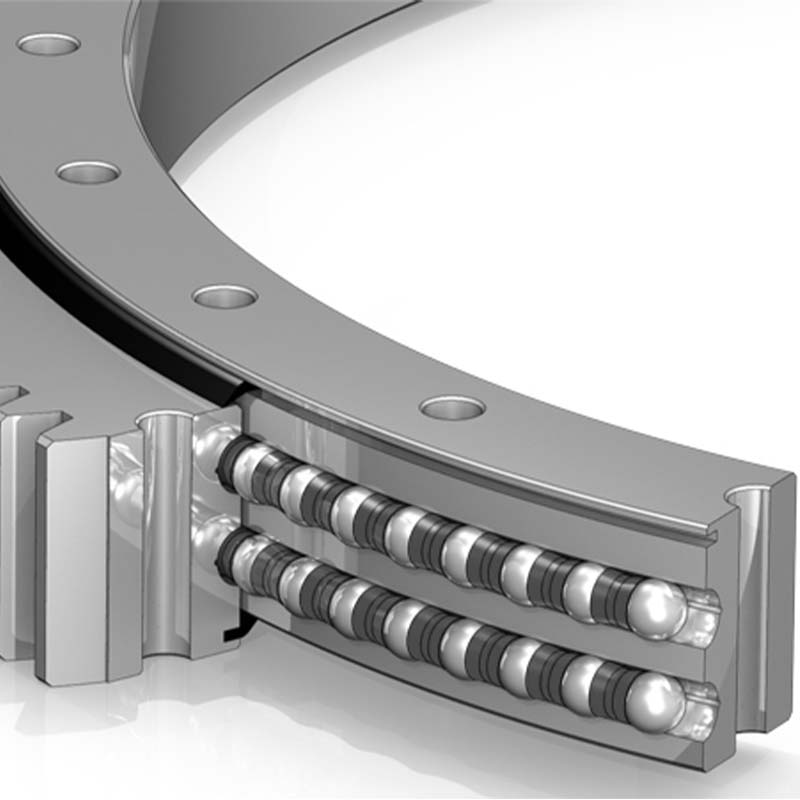Heavy load slewing bearings are designed to accommodate high load capacities in applications requiring rotational movement and load transmission. These bearings are essential in machinery where large loads and moments are typical, such as in heavy equipment and large-scale industrial applications. They are engineered to withstand not only the operational loads but also environmental stresses such as temperature fluctuations and exposure to contaminants.
Three Row Roller Slewing Bearing
The three-row roller slewing bearing consists of an inner ring, an outer ring, three rows of rollers
Read More Get A QuoteDouble Row 8 Point Contact Ball Slew Bearings
The double-row ball slewing bearing is mainly composed of an inner ring, an outer ring, two rows of rolling elements (steel balls), a spacer or a cage and a sealing device.
Read More Get A QuoteFeatures of Heavy Load Slewing Bearings
Robust Construction: These bearings are built with high strength and durable materials to withstand heavy loads and harsh conditions.
Large Dimensions: Typically, heavy load slewing bearings are larger in size to distribute loads more effectively across a broader area.
Multiple Rows of Rolling Elements: To increase load capacity, these bearings often feature multiple rows of rollers or balls. This can include double or triple row designs, each optimized for different types of loads (axial, radial, and moment loads).
Specialized Raceway Designs: The raceways are often hardened to resist wear and deformation under heavy loads.
Integrated Gearing: Heavy load slewing bearings can include internal or external gears, or be gearless, depending on the application's requirements. Gearing is typically robust to handle the increased torque associated with heavy loads.
Advanced Sealing Systems: High-quality seals are crucial to protect the bearing from dust, water, and other contaminants, which is especially important in outdoor or harsh environments.
Advantages of Heavy Load Slewing Bearings
High Load Capacity: They can support very high axial, radial, and moment loads simultaneously, making them suitable for heavy-duty applications.
Versatility: These bearings can be tailored with various features like gears and different types of rolling elements to suit specific operational needs.
Durability: Designed to endure tough working conditions and prolonged use without significant wear.
Space Efficiency: Despite their robustness, they are designed to be as compact as possible, providing substantial load-bearing capacity without requiring excessive space.
Ease of Integration: Can be easily integrated into various machinery with customizable mounting options.
Common Applications
Cranes: Tower, mobile, and marine cranes rely on heavy load slewing bearings for rotation and stability under heavy loads.
Wind Turbines: Used in the yaw and pitch mechanisms to manage the orientation of the nacelle and blades under variable wind conditions.
Mining Equipment: Essential in the operation of large excavators, stacker reclaimers, and other mining machinery.
Marine Propulsion: Employed in thrusters and other marine propulsion systems where high load capacities are essential.
Tunnel Boring Machines: Critical for the operation of these machines, enabling the rotational movement necessary for cutting through rock.
How to select heavy load slew bearings?
Load Calculations: Accurate load calculations are crucial to select a bearing that can handle the expected operational stresses without failure.
Environmental Factors: Consideration of the operating environment is essential to choose suitable materials and seals for temperature extremes, corrosion potential, and exposure to abrasive particles.
Maintenance and Accessibility: Given the critical nature and size of these bearings, ease of maintenance and accessibility for inspection and repair are important design considerations.
Quality Assurance: Selecting bearings from reputable manufacturers with proven track records in heavy-duty applications is essential to ensure reliability and performance.
Customization Options: Depending on the application, customization in terms of dimensions, materials, gearing, and sealing may be necessary to meet specific operational requirements.





